Search Result
Results for "
purification
" in MedChemExpress (MCE) Product Catalog:
12
Biochemical Assay Reagents
2
Isotope-Labeled Compounds
| Cat. No. |
Product Name |
Target |
Research Areas |
Chemical Structure |
-
- HY-138638
-
|
|
Others
|
Others
|
|
Cross-linked dextran LH 20 could be used for the isolation and purification of natural compounds and foods, such as red wine, pigments, and flavonoids .
|
-
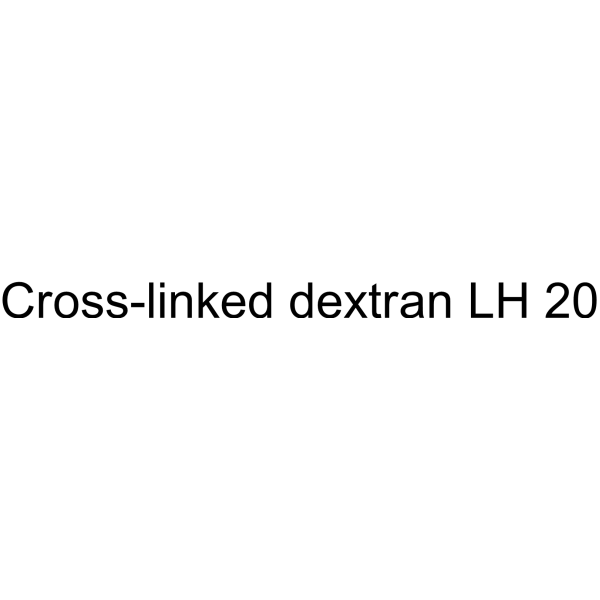
-
- HY-157233
-
|
|
Others
|
Cardiovascular Disease
|
|
AC Antibody purification resin 1 is a nano agarose with a particle size of 69μm. AC Antibody purification resin 1 can be used in ADC purification. AC Antibody purification resin 1 contains a ligand: recombinant protein A.
|
-

-
- HY-157234
-
|
|
Others
|
Others
|
AC mAb-X purification resin is a special protein A resin.
Matrix: high rigidity agarose; particle size: 40~120 μm; ligand: recombinant alkali-resistant Protein A (~24KD); ADC purification resin.
|
-
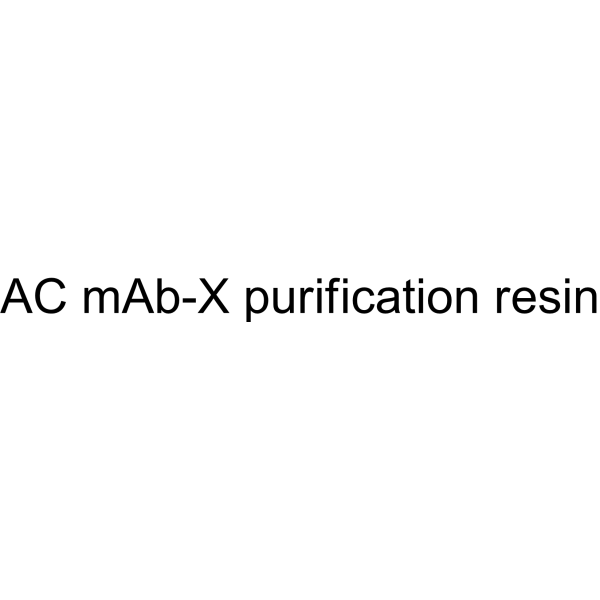
-
- HY-157232
-
|
|
Others
|
Others
|
AC Antibody purification resin 2 is based on spherical, highly cross-linked agarose beads with a narrow size distribution and high mechanical stability. Used for the separation and purification of complex antibodies such as monoclonal antibody, double antibody, multi-antibody and Fc fusion protein
.
Substrate: highly crosslinked agarose microspheres; Particle size: 65μm; Ligand: alkali-resistant recombinant Protein A; ADC purified resin.
|
-
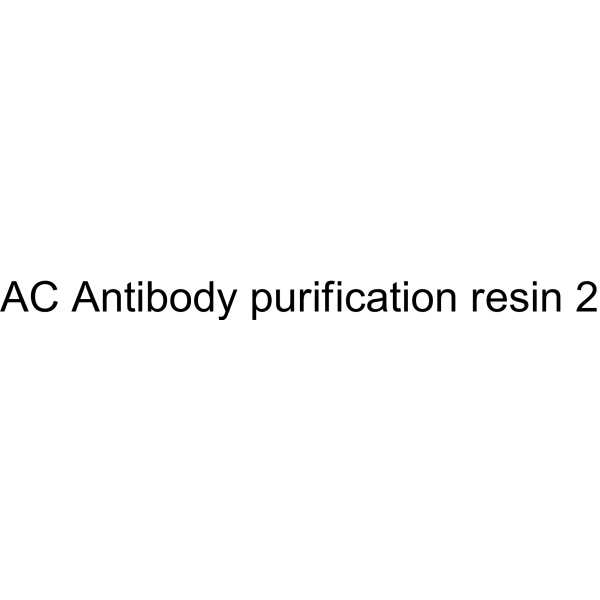
-
- HY-157241
-
|
|
Others
|
Others
|
|
CEX Cation-exchange resin 1 is an ion exchange chromatography resin based on monodisperse polystyrene/divinylbenzene (PS-DVB). The particle size of CEX Cation-exchange resin 1 is 50μm and the ligand is -CH2CH2CH2SO3-. CEX Cation-exchange resin 1 can be used for the separation and purification of antibodies, VLPs, viruses and proteins .
|
-
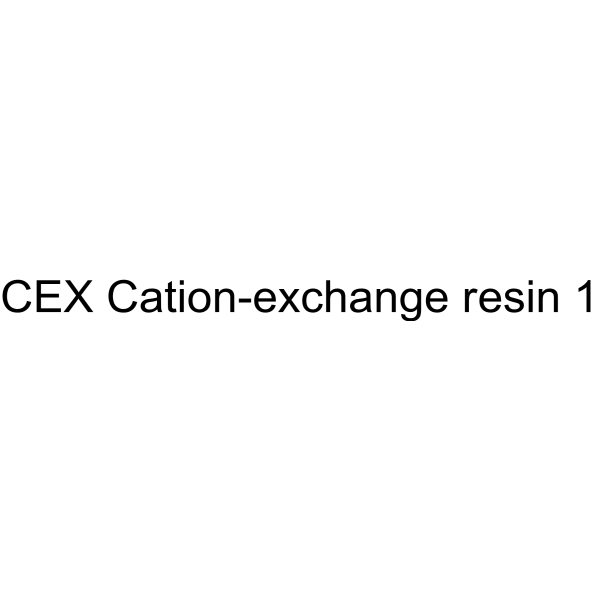
-
- HY-157236
-
|
|
Others
|
Others
|
|
AEX Anion-exchange resin 1 is a strong anion exchange chromatography resin, based on monodisperse polystyrene/divinylbenzene (PS-DVB), with a particle size of 50 μm and an ionic ligand of –CH2N + (CH3)3. AEX Anion-exchange resin 1 can be used for the separation and purification of biological macromolecules such as proteins, antibodies, and viral vaccines.
|
-
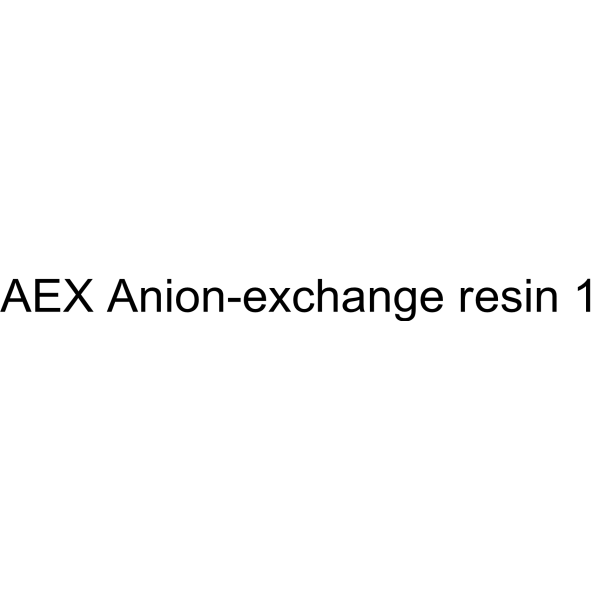
-
- HY-Y0682
-
|
EDTA
|
Biochemical Assay Reagents
Bacterial
SOD
|
Cardiovascular Disease
Neurological Disease
|
|
Ethylenediaminetetraacetic acid (EDTA) is a kind of metal chelating agent (binds to bivalent and trivalent metal cations, including calcium). Ethylenediaminetetraacetic acid has antibacterial, anti-inflammatory, antioxidant, anti-hypercalcemia and anticoagulant activities. Ethylenediaminetetraacetic acid decreases the metal ion-catalyzed oxidative damage to proteins, and allows maintenance of reducing environment during protein purification. Ethylenediaminetetraacetic acid can alleviate the liver fibrosis. Ethylenediaminetetraacetic acid can be used for coronary artery disease and neural system disease research .
|
-

-
- HY-W105700
-
|
EDTA sodium hydrate
|
Biochemical Assay Reagents
Bacterial
SOD
|
Cardiovascular Disease
Neurological Disease
|
|
Ethylenediaminetetraacetic acid (EDTA) sodium hydrate is a kind of metal chelating agent (binds to bivalent and trivalent metal cations, including calcium). Ethylenediaminetetraacetic acid sodium hydrate has antibacterial, anti-inflammatory, antioxidant, anti-hypercalcemia and anticoagulant activities. Ethylenediaminetetraacetic acid sodium hydrate decreases the metal ion-catalyzed oxidative damage to proteins, and allows maintenance of reducing environment during protein purification. Ethylenediaminetetraacetic acid sodium hydrate can alleviate the liver fibrosis. Ethylenediaminetetraacetic acid sodium hydrate can be used for coronary artery disease and neural system disease research .
|
-

-
- HY-B1009
-
|
EDTA trisodium salt; Trisodium EDTA
|
Ferroptosis
Bacterial
SOD
|
Cardiovascular Disease
Neurological Disease
|
|
Ethylenediaminetetraacetic acid trisodium salt (EDTA trisodium salt; Trisodium EDTA) is a kind of metal chelating agent (binds to bivalent and trivalent metal cations, including calcium). Ethylenediaminetetraacetic acid trisodium salt has antibacterial, anti-inflammatory, antioxidant, anti-hypercalcemia and anticoagulant activities. Ethylenediaminetetraacetic acid trisodium salt decreases the metal ion-catalyzed oxidative damage to proteins, and allows maintenance of reducing environment during protein purification. Ethylenediaminetetraacetic acid trisodium salt can alleviate the liver fibrosis. Ethylenediaminetetraacetic acid can be used for coronary artery disease and neural system disease research .
|
-
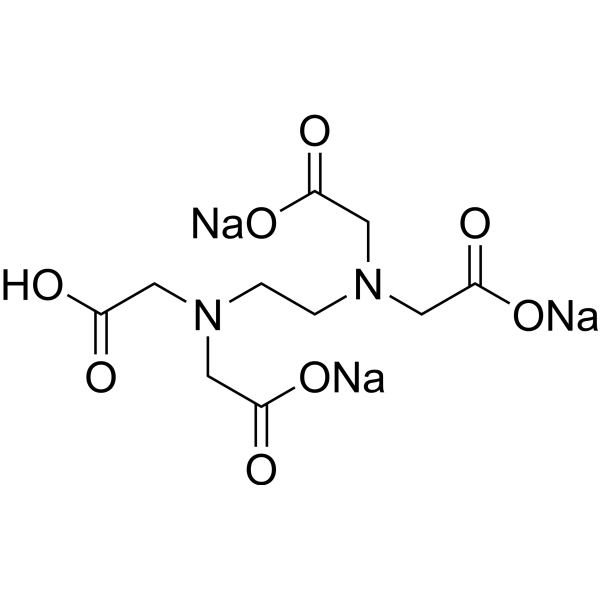
-
- HY-Y0682B
-
|
EDTA tetrasodium
|
Biochemical Assay Reagents
Bacterial
SOD
|
Cardiovascular Disease
Neurological Disease
|
|
Ethylenediaminetetraacetic acid (EDTA) tetrasodium is a kind of metal chelating agent (binds to bivalent and trivalent metal cations, including calcium). Ethylenediaminetetraacetic acid tetrasodium has antibacterial, anti-inflammatory, antioxidant, anti-hypercalcemia and anticoagulant activities. Ethylenediaminetetraacetic acid tetrasodium decreases the metal ion-catalyzed oxidative damage to proteins, and allows maintenance of reducing environment during protein purification. Ethylenediaminetetraacetic acid tetrasodium can alleviate the liver fibrosis. Ethylenediaminetetraacetic acid tetrasodium can be used for coronary artery disease and neural system disease research .
|
-

-
- HY-Y0682A
-
|
EDTA disodium dihydrate
|
Biochemical Assay Reagents
Bacterial
SOD
|
Cardiovascular Disease
Neurological Disease
|
|
Ethylenediaminetetraacetic acid (EDTA) disodium dehydrate is a kind of metal chelating agent (binds to bivalent and trivalent metal cations, including calcium). Ethylenediaminetetraacetic acid disodium dehydrate has antibacterial, anti-inflammatory, antioxidant, anti-hypercalcemia and anticoagulant activities. Ethylenediaminetetraacetic acid disodium dehydrate decreases the metal ion-catalyzed oxidative damage to proteins, and allows maintenance of reducing environment during protein purification. Ethylenediaminetetraacetic acid disodium dehydrate can alleviate the liver fibrosis. Ethylenediaminetetraacetic acid disodium dehydrate can be used for coronary artery disease and neural system disease research .
|
-
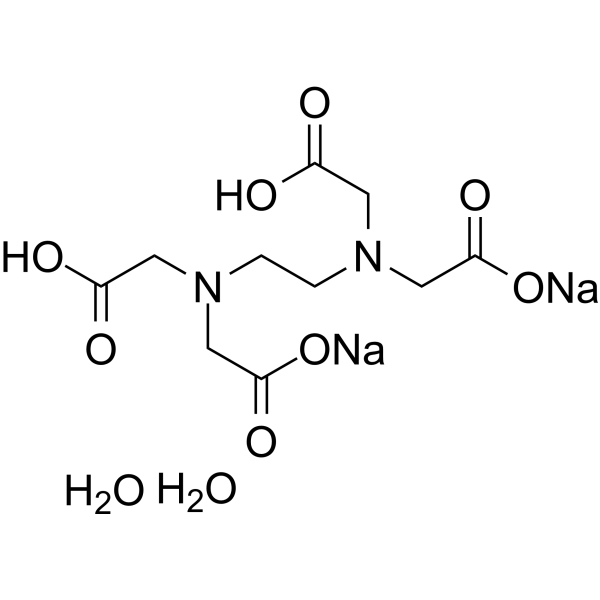
-
- HY-157244
-
|
|
Others
|
Others
|
|
Proteins separation resin is a hydrophobic interaction chromatography resin that can be used in the monoclonal antibody purification (Particle size: 65 μm) .
|
-
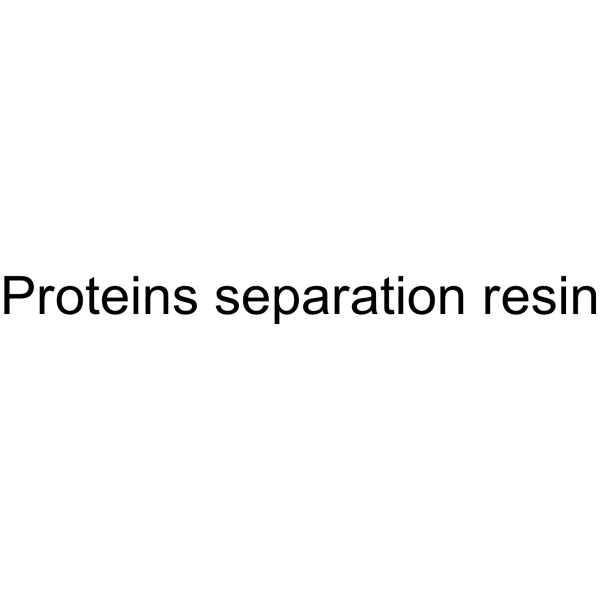
-
- HY-P1113
-
|
|
GSK-3
|
Others
|
|
Phospho-Glycogen Synthase Peptide-2 (substrate) is peptide substrate for glycogen synthase kinase-3 (GSK-3) and can be used for affinity purification of protein-serine kinases .
|
-

-
- HY-P1113A
-
|
|
GSK-3
|
Others
|
|
Phospho-Glycogen Synthase Peptide-2 (substrate) is peptide substrate for glycogen synthase kinase-3 (GSK-3) and can be used for affinity purification of protein-serine kinases .
|
-

-
- HY-108294
-
|
Nonaoxyethylene monododecyl ether
|
Biochemical Assay Reagents
|
Others
|
|
Nonaethylene glycol monododecyl ether (Nonaoxyethylene monododecyl ether) is a nonionic surfactant and polyethylene glycol (PEG) detergent that can be used to form initial coalesced O/W emulsion droplets, as well as for protein separation and purification .
|
-
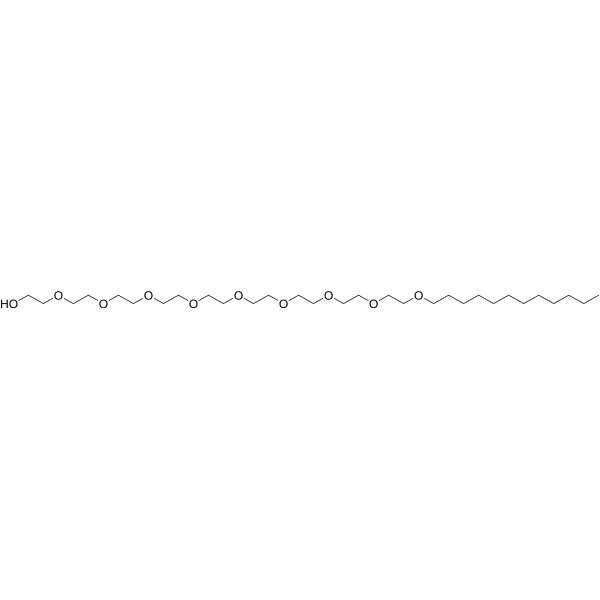
-
- HY-Y0319B
-
|
|
|
|
|
Acetic acid potassium 99% is a potassium salt employed to replenish electrolytes, for restoration of water-electrolyte balance. Acetic acid potassium 99% can employ in DNA and protein purification. Acetic acid potassium 99% has been used to prepare neutralizing solution for alkaline lysis of bacteria .
|
-
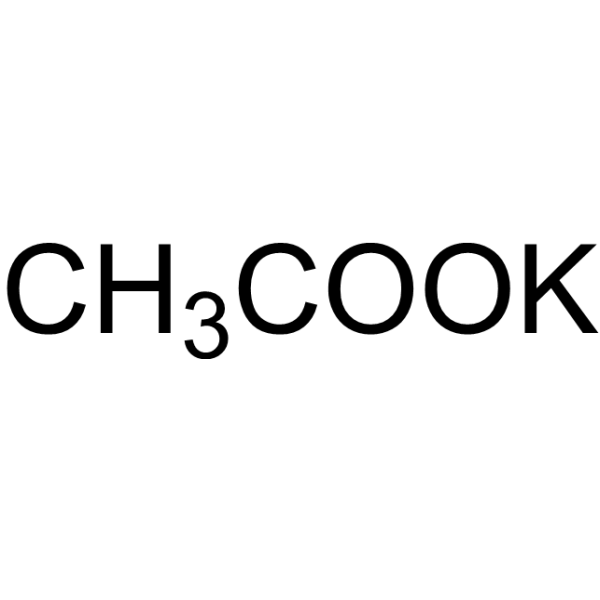
-
- HY-157243
-
|
|
Others
|
Others
|
|
CEX Cation-exchange resin 2 is a CEX strong cation exchange resin, ADC purification resin. CEX Cation-exchange resin 2 contains cross-linked poly(styrene-divinylbenzene), which has good hydrophobicity .
|
-

-
- HY-103006
-
NAI-N3
5 Publications Verification
|
Biochemical Assay Reagents
|
Others
|
|
NAI-N3 is a RNA acylation reagent that enables RNA purification. NAI-N3 is a dual-function SHAPE (selective 2-hydroxyl acylation and profiling experiment) probe (RNA structure probe and enrichment) .
|
-
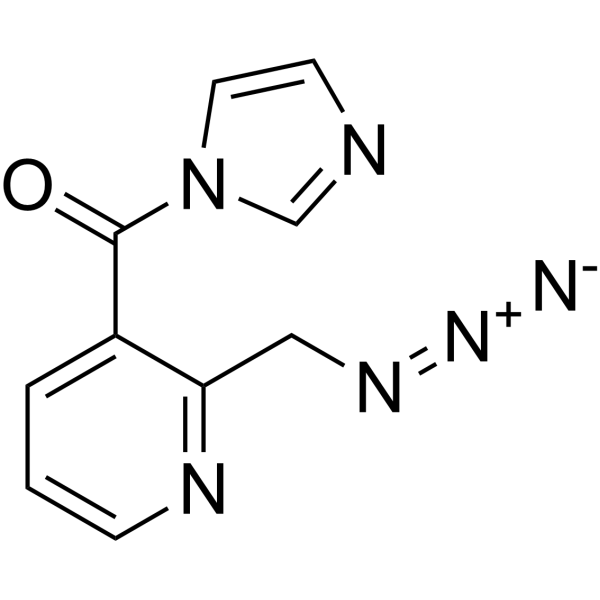
-
- HY-W127628
-
|
|
Biochemical Assay Reagents
|
Others
|
|
Decyl β-D-glucopyranoside is a nonionic surfactant commonly used in biochemical and molecular biology research. It can be used for the extraction, purification and structural analysis of cell membranes, and is widely used in the fields of proteomics and genetic engineering. In addition, this compound is also used as an auxiliary reagent and dehydrating agent in some biochemical experiments.
|
-
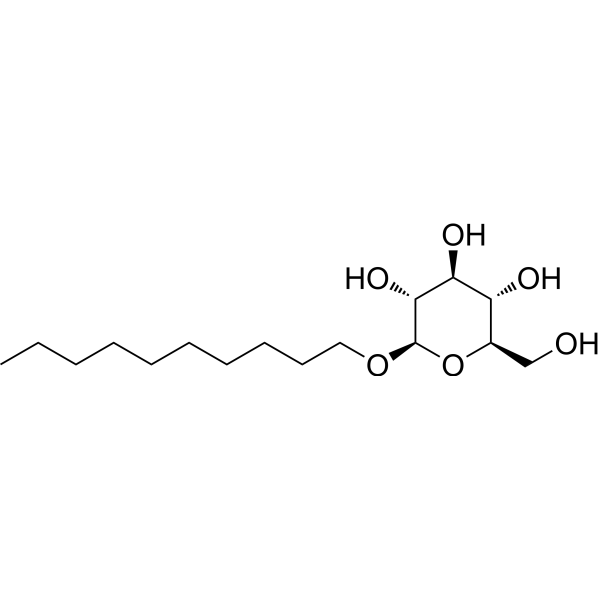
-
- HY-P3940
-
|
|
PKC
|
Others
|
|
Ac-MBP (4-14) Peptide is an acetylated MBP (4-14) peptide. MBP (4-14) Peptide is a very selective (protein kinase C) PKC substrate. Ac-MBP (4-14) Peptide can be used for PKC assay in extracts without prior purification to eliminate interfering protein kinases or phosphatases .
|
-
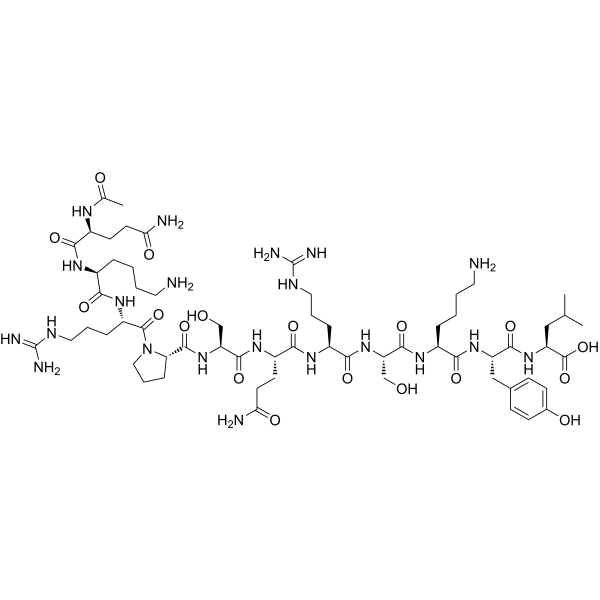
-
- HY-157239
-
|
|
Others
|
Cancer
|
|
AEX HQ Anion-exchange resin (POROS 50HQ) is AEX commonly used filler. AEX HQ Anion-exchange resin is HQ strong anion exchange resin and can purify targeting protein .
|
-

-
- HY-151787
-
|
|
ADC Linker
|
Others
|
|
Fmoc-L-Lys(N3-Aca-DIM)-OH is a click chemistry reagent containing an azide group. Used as a SPPS building-block for the “helping hand” strategy for purification of highly insoluble peptides. Solubilizing residues are attached to the Lys side-chains using Click-chemistry. The solubilizing tag can be removed with 1M hydrazine or hydroxylamine solution .
|
-
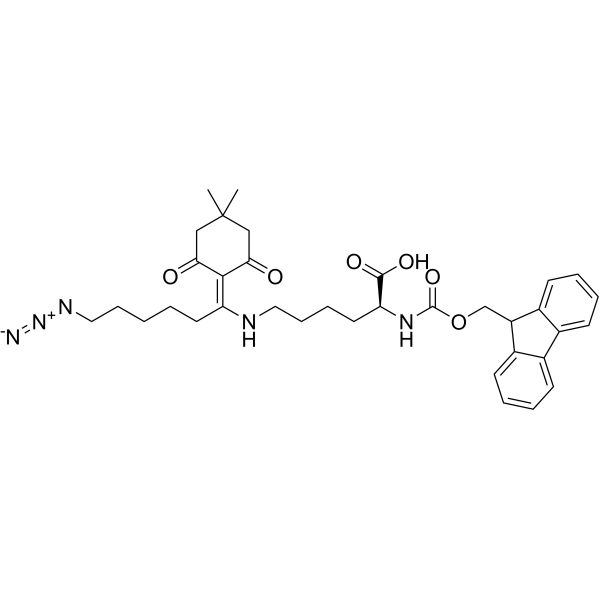
-
- HY-15917A
-
|
|
Biochemical Assay Reagents
|
Others
|
|
L-Dithiothreitol (DTT) is a reducing agent commonly used in various biochemical applications to break disulfide bonds in proteins, thereby denaturing proteins or preventing the formation of unwanted aggregates. DTT has a unique chemical property that cleaves the sulfur-sulfur bond in the disulfide bond to form a sulfhydryl group. This makes it a useful tool for protein purification, enzyme assays, and protein structure studies.
|
-

-
- HY-D0227F
-
|
Tris hydrochloride (reagent grade); Tris(hydroxymethyl)aminomethane hydrochloride (reagent grade)
|
Biochemical Assay Reagents
|
Others
|
|
THAM hydrochloride (reagent grade), also known as Tris-HCl, is a buffer commonly used in various biochemical and molecular biology applications to maintain a stable pH environment. Tris-HCl has unique chemical properties that allow it to resist changes in pH when acidic or basic substances are added, which makes it useful for stabilizing biological samples or reagents. It is commonly used in electrophoresis and protein purification procedures.
|
-
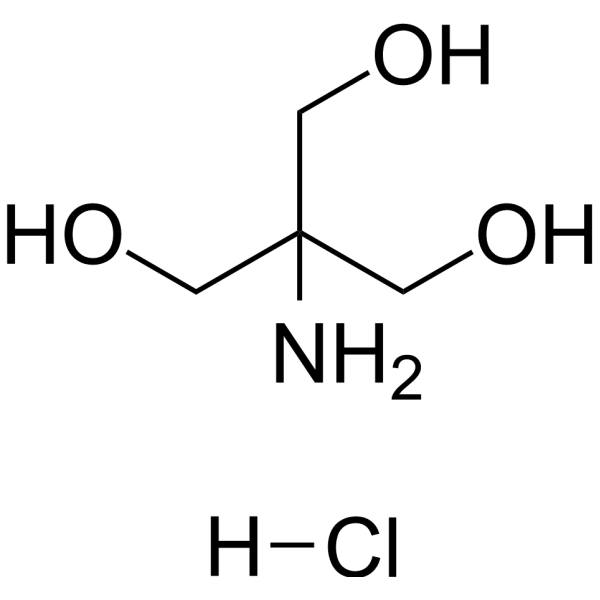
-
- HY-151786
-
|
|
ADC Linker
|
Others
|
|
Fmoc-L-Lys(Pentynoyl-DIM)-OH is a click chemistry reagent containing an azide. Fmoc-L-Lys(Pentynoyl-DIM)-OH can be used as a SPPS building block for the “helping hand” strategy for purification of highly insoluble peptides. Solubilizing residues are attached to the Lys side-chains using Click-chemistry. The solubilizing tag can be removed with 1M hydrazine or hydroxylamine solution .
|
-
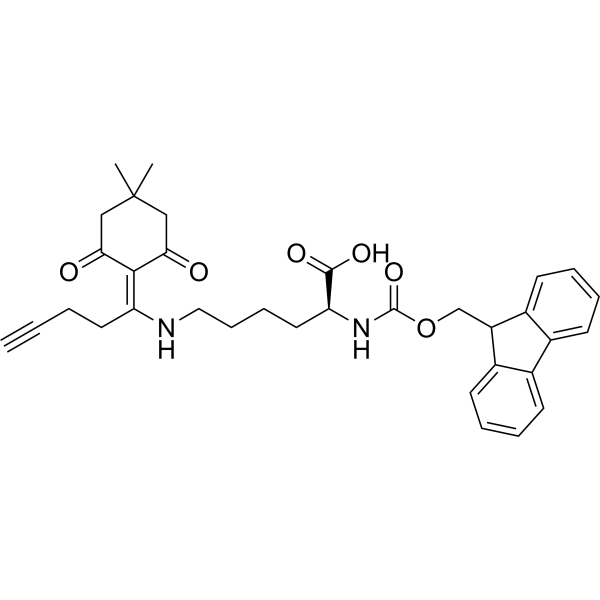
-
- HY-Y0682S
-
|
Ethylenediaminetetraacetic acid-d12
|
Isotope-Labeled Compounds
|
|
|
EDTA-d12 is the deuterium labeled Ethylenediaminetetraacetic acid[1]. Ethylenediaminetetraacetic acid (EDTA) is a metal chelators (binds to metal divalent and trivalent cations including calcium), which shows activities of anticoagulant and anti-hypercalcemic. Ethylenediaminetetraacetic acid decreases the metal ion-catalyzed oxidative damage to proteins, and allows maintenance of reducing environment during protein purification. Ethylenediaminetetraacetic acid can also decrease the formation of disulfide bonds[2][3][4].
|
-

-
- HY-157235
-
|
|
Others
|
Inflammation/Immunology
|
|
AC Antibody affinity resin is AC commonly used packing. AC Antibody affinity resin has highly cross-linked agarose matrix with 85 μm of average particle size. AC Antibody affinity resin has alkali-resistant protein A derivative (E. coli) ligand. AC Antibody affinity resin can be used for antibody affinity chromatography .
|
-
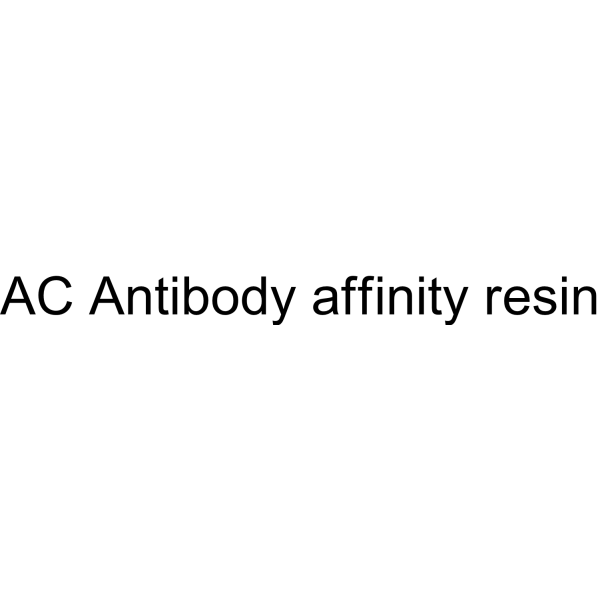
-
- HY-Y0682S1
-
|
EDTA-d16
|
Isotope-Labeled Compounds
|
|
|
Ethylenediaminetetraacetic acid-d16 is the deuterium labeled Ethylenediaminetetraacetic acid[1]. Ethylenediaminetetraacetic acid (EDTA) is a metal chelators (binds to metal divalent and trivalent cations including calcium), which shows activities of anticoagulant and anti-hypercalcemic. Ethylenediaminetetraacetic acid decreases the metal ion-catalyzed oxidative damage to proteins, and allows maintenance of reducing environment during protein purification. Ethylenediaminetetraacetic acid can also decrease the formation of disulfide bonds[2][3][4].
|
-

-
- HY-W588717
-
|
|
Biochemical Assay Reagents
|
Others
|
|
DBCO-Tetraacetyl mannosamine is an organic compound commonly used for chemical alteration and modification in biological research. It can be used to modify glycoproteins, cell surface molecules, and other biomolecules, and is widely used in biomarking and purification techniques. In addition, this compound is used as a carrier for drugs in certain drug controlled release systems. DBCO-Tetraacetyl mannosamine is a click chemistry reagent, it contains a DBCO group that can undergo strain-promoted alkyne-azide cycloaddition (SPAAC) with molecules containing Azide groups.
|
-
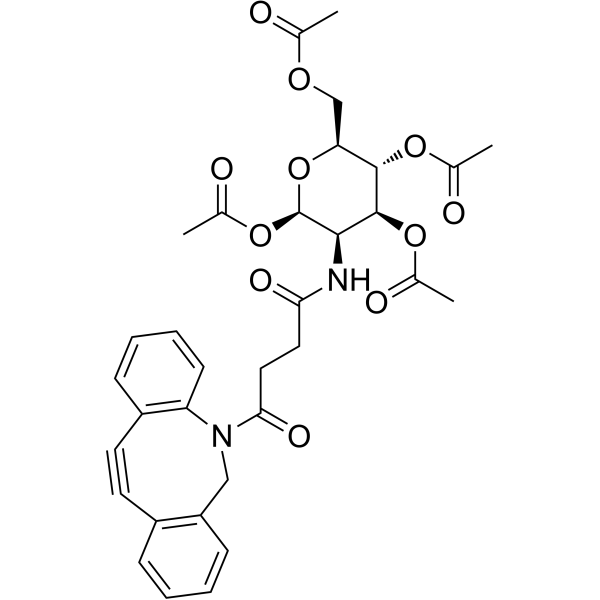
-
- HY-W250181
-
|
Octyl β-D-thiomaltopyranoside
|
Biochemical Assay Reagents
|
Others
|
|
Octyl thiomaltoside (OTM) is a nonionic detergent commonly used in the purification and crystallization of membrane proteins. It belongs to the family of maltoside detergents and has a hydrophilic head group and a lipophilic tail group, enabling it to interact with water-soluble and membrane-bound proteins. OTMs are known for their ability to solubilize integral membrane proteins without disrupting their structure or function, making them an invaluable tool in biochemical and biophysical research. In addition to protein research, OTMs are used in a variety of other applications, including drug delivery systems, nanotechnology, and diagnostic analysis.
|
-
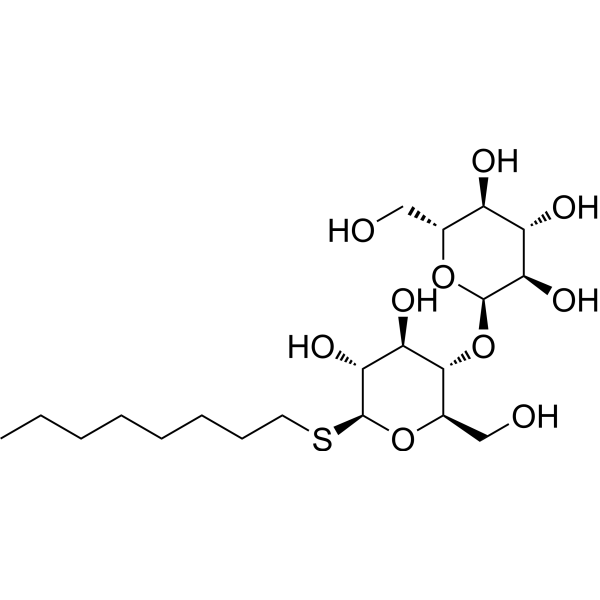
-
- HY-W099581
-
|
Zwittergent 3-14
|
Biochemical Assay Reagents
|
Others
|
|
Zwittergent 3-14 (DMAPS) is a zwitterionic detergent commonly used in biochemistry and molecular biology for the solubilization and purification of membrane-bound proteins and other hydrophobic biomolecules, which have both hydrophilic and hydrophobic moieties , so that it has good detergency properties, making it suitable for stabilizing membrane proteins in aqueous solutions. In addition, DMAPS has been used in various techniques such as electrophoresis and chromatography for the separation and analysis of biomolecules. The long The hydrocarbon chains provide it with good membrane penetration and solubilization capabilities, while the sulfonate and quaternary ammonium groups ensure water solubility and charge neutrality.
|
-
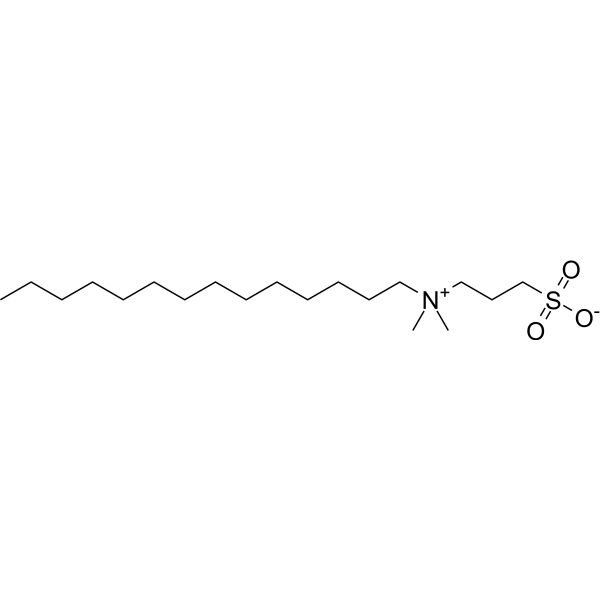
-
- HY-128974
-
|
Lauryl Maltoside
|
Others
|
Others
|
|
N-Dodecyl-β-D-maltoside (Lauryl Maltoside) is a non-ionic detergent. N-Dodecyl-β-D-maltoside has strong adsorption on alumina, titanium dioxide and hematite. N-Dodecyl-β-D-maltoside can promote the reactivation of various proteins. N-Dodecyl-β-D-maltoside can effectively stabilize photoactive reaction center complexes (RCs) and inhibit the degradation of Rhodopseudomonas spheroides R-26 reaction center in solution. N-Dodecyl-β-D-maltoside can be used for purification and stabilization of RNA polymerase and for detection of protein-lipid interactions .
|
-

| Cat. No. |
Product Name |
Type |
-
- HY-141522
-
|
|
Filter Medium
|
|
Cross-linked dextran G 100 is a gel filtration medium that can be used for protein purification .
|
-
- HY-Y0682
-
|
EDTA
|
Biochemical Assay Reagents
|
|
Ethylenediaminetetraacetic acid (EDTA) is a kind of metal chelating agent (binds to bivalent and trivalent metal cations, including calcium). Ethylenediaminetetraacetic acid has antibacterial, anti-inflammatory, antioxidant, anti-hypercalcemia and anticoagulant activities. Ethylenediaminetetraacetic acid decreases the metal ion-catalyzed oxidative damage to proteins, and allows maintenance of reducing environment during protein purification. Ethylenediaminetetraacetic acid can alleviate the liver fibrosis. Ethylenediaminetetraacetic acid can be used for coronary artery disease and neural system disease research .
|
-
- HY-W105700
-
|
EDTA sodium hydrate
|
Biochemical Assay Reagents
|
|
Ethylenediaminetetraacetic acid (EDTA) sodium hydrate is a kind of metal chelating agent (binds to bivalent and trivalent metal cations, including calcium). Ethylenediaminetetraacetic acid sodium hydrate has antibacterial, anti-inflammatory, antioxidant, anti-hypercalcemia and anticoagulant activities. Ethylenediaminetetraacetic acid sodium hydrate decreases the metal ion-catalyzed oxidative damage to proteins, and allows maintenance of reducing environment during protein purification. Ethylenediaminetetraacetic acid sodium hydrate can alleviate the liver fibrosis. Ethylenediaminetetraacetic acid sodium hydrate can be used for coronary artery disease and neural system disease research .
|
-
- HY-Y0682B
-
|
EDTA tetrasodium
|
Biochemical Assay Reagents
|
|
Ethylenediaminetetraacetic acid (EDTA) tetrasodium is a kind of metal chelating agent (binds to bivalent and trivalent metal cations, including calcium). Ethylenediaminetetraacetic acid tetrasodium has antibacterial, anti-inflammatory, antioxidant, anti-hypercalcemia and anticoagulant activities. Ethylenediaminetetraacetic acid tetrasodium decreases the metal ion-catalyzed oxidative damage to proteins, and allows maintenance of reducing environment during protein purification. Ethylenediaminetetraacetic acid tetrasodium can alleviate the liver fibrosis. Ethylenediaminetetraacetic acid tetrasodium can be used for coronary artery disease and neural system disease research .
|
-
- HY-P2149A
-
|
|
Native Proteins
|
|
Concanavalin A (agarose) consists of Concanavalin A (HY-P2149) coupled to agarose. Concanavalin A is a tetrameric metalloprotein lectin isolated from Canavalia ensiformis (jack bean). Concanavalin A (agarose) is used for the purification of glycoproteins, polysaccharides and glycolipids as it binds molecules containing α-D-mannopyranosyl, α-D-glucopyranosyl and sterically related residues. Concanavalin A (agarose) has also be used in other application areas including purification of enzyme-antibody conjugates, purification of IgM and separation of membrane vesicles .
|
-
- HY-Y0682A
-
|
EDTA disodium dihydrate
|
Biochemical Assay Reagents
|
|
Ethylenediaminetetraacetic acid (EDTA) disodium dehydrate is a kind of metal chelating agent (binds to bivalent and trivalent metal cations, including calcium). Ethylenediaminetetraacetic acid disodium dehydrate has antibacterial, anti-inflammatory, antioxidant, anti-hypercalcemia and anticoagulant activities. Ethylenediaminetetraacetic acid disodium dehydrate decreases the metal ion-catalyzed oxidative damage to proteins, and allows maintenance of reducing environment during protein purification. Ethylenediaminetetraacetic acid disodium dehydrate can alleviate the liver fibrosis. Ethylenediaminetetraacetic acid disodium dehydrate can be used for coronary artery disease and neural system disease research .
|
-
- HY-W127628
-
|
|
Biochemical Assay Reagents
|
|
Decyl β-D-glucopyranoside is a nonionic surfactant commonly used in biochemical and molecular biology research. It can be used for the extraction, purification and structural analysis of cell membranes, and is widely used in the fields of proteomics and genetic engineering. In addition, this compound is also used as an auxiliary reagent and dehydrating agent in some biochemical experiments.
|
-
- HY-15917A
-
|
|
Biochemical Assay Reagents
|
|
L-Dithiothreitol (DTT) is a reducing agent commonly used in various biochemical applications to break disulfide bonds in proteins, thereby denaturing proteins or preventing the formation of unwanted aggregates. DTT has a unique chemical property that cleaves the sulfur-sulfur bond in the disulfide bond to form a sulfhydryl group. This makes it a useful tool for protein purification, enzyme assays, and protein structure studies.
|
-
- HY-D0227F
-
|
Tris hydrochloride (reagent grade); Tris(hydroxymethyl)aminomethane hydrochloride (reagent grade)
|
Biochemical Assay Reagents
|
|
THAM hydrochloride (reagent grade), also known as Tris-HCl, is a buffer commonly used in various biochemical and molecular biology applications to maintain a stable pH environment. Tris-HCl has unique chemical properties that allow it to resist changes in pH when acidic or basic substances are added, which makes it useful for stabilizing biological samples or reagents. It is commonly used in electrophoresis and protein purification procedures.
|
-
- HY-W588717
-
|
|
Biochemical Assay Reagents
|
|
DBCO-Tetraacetyl mannosamine is an organic compound commonly used for chemical alteration and modification in biological research. It can be used to modify glycoproteins, cell surface molecules, and other biomolecules, and is widely used in biomarking and purification techniques. In addition, this compound is used as a carrier for drugs in certain drug controlled release systems. DBCO-Tetraacetyl mannosamine is a click chemistry reagent, it contains a DBCO group that can undergo strain-promoted alkyne-azide cycloaddition (SPAAC) with molecules containing Azide groups.
|
-
- HY-W250181
-
|
Octyl β-D-thiomaltopyranoside
|
Biochemical Assay Reagents
|
|
Octyl thiomaltoside (OTM) is a nonionic detergent commonly used in the purification and crystallization of membrane proteins. It belongs to the family of maltoside detergents and has a hydrophilic head group and a lipophilic tail group, enabling it to interact with water-soluble and membrane-bound proteins. OTMs are known for their ability to solubilize integral membrane proteins without disrupting their structure or function, making them an invaluable tool in biochemical and biophysical research. In addition to protein research, OTMs are used in a variety of other applications, including drug delivery systems, nanotechnology, and diagnostic analysis.
|
-
- HY-W099581
-
|
Zwittergent 3-14
|
Biochemical Assay Reagents
|
|
Zwittergent 3-14 (DMAPS) is a zwitterionic detergent commonly used in biochemistry and molecular biology for the solubilization and purification of membrane-bound proteins and other hydrophobic biomolecules, which have both hydrophilic and hydrophobic moieties , so that it has good detergency properties, making it suitable for stabilizing membrane proteins in aqueous solutions. In addition, DMAPS has been used in various techniques such as electrophoresis and chromatography for the separation and analysis of biomolecules. The long The hydrocarbon chains provide it with good membrane penetration and solubilization capabilities, while the sulfonate and quaternary ammonium groups ensure water solubility and charge neutrality.
|
| Cat. No. |
Product Name |
Target |
Research Area |
-
- HY-P0294
-
|
6X His Tag
|
Peptides
|
Others
|
|
Hexa-His is a peptide consisting of 6 His residues, used as a metal binding site for the recombinant protein and mainly used for separation and purification of corresponding proteins .
|
-
- HY-P0327
-
|
|
Peptides
|
Others
|
|
T7 Tag Peptide is a protein tag derived from the N-terminal 11 residues of the major T7 capsid protein, gp 10. T7 Tag Peptide can be used in different immunoassays as well as affinity purification .
|
-
- HY-P0327A
-
|
|
Peptides
|
Others
|
|
T7 Tag Peptide TFA is a protein tag derived from the N-terminal 11 residues of the major T7 capsid protein, gp 10. T7 Tag Peptide TFA can be used in different immunoassays as well as affinity purification .
|
-
- HY-P0223
-
FLAG peptide
Maximum Cited Publications
9 Publications Verification
|
Peptides
|
Inflammation/Immunology
|
|
FLAG peptide is an eight amino acids peptide (Asp-Tyr-Lys-Asp-Asp-Asp-Asp-Lys) with an enterokinase-cleavage site; designed for antibody-mediated identification and purification of recombinant proteins.
|
-
- HY-P1113
-
|
|
GSK-3
|
Others
|
|
Phospho-Glycogen Synthase Peptide-2 (substrate) is peptide substrate for glycogen synthase kinase-3 (GSK-3) and can be used for affinity purification of protein-serine kinases .
|
-
- HY-P1113A
-
|
|
GSK-3
|
Others
|
|
Phospho-Glycogen Synthase Peptide-2 (substrate) is peptide substrate for glycogen synthase kinase-3 (GSK-3) and can be used for affinity purification of protein-serine kinases .
|
-
- HY-P0319
-
|
|
Peptides
|
Others
|
|
3X FLAG peptides are FLAG-tagged peptides containing three repeats of the Asp-Tyr-Lys-Xaa-Xaa-Asp motif. 3X FLAG peptide can be used for protein separation and purification, and competitive elution with target proteins.
|
-
- HY-P0319A
-
|
|
Peptides
|
Others
|
|
3X FLAG peptide TFA is a FLAG-tagged peptide containing three repeats of the Asp-Tyr-Lys-Xaa-Xaa-Asp motif. 3X FLAG peptide TFA can be used for protein separation and purification, and competitive elution with target proteins.
|
-
- HY-P3940
-
|
|
PKC
|
Others
|
|
Ac-MBP (4-14) Peptide is an acetylated MBP (4-14) peptide. MBP (4-14) Peptide is a very selective (protein kinase C) PKC substrate. Ac-MBP (4-14) Peptide can be used for PKC assay in extracts without prior purification to eliminate interfering protein kinases or phosphatases .
|
-
- HY-P0329
-
|
|
Peptides
|
Others
|
|
X-press Tag Peptide is a tag peptide used for protein purification. X-press Tag is also an N-terminal leader peptide; this N-terminal peptide contains a polyhistidine sequence, the Xpress epitope (part of bacteriophage T7 gene 10 protein) and an enterokinase cleavage site. Anti-Xpress antibodies recognize the Xpress epitope sequence found in this leader peptide.
|
-
- HY-K0210
-
|
|
|
MCE Ni-NTA His-Tag Purification Agarose, a 6% highly cross-linked agarose reagent, enables high-yield, high-purity purification of his-tagged proteins.
|
-
- HY-K0221
-
|
|
|
MCE Affinity Chromatography (AC) Columns are designed for purification of recombinant proteins with different tags, enzymes, antibodies, antigens and nucleic acids.
|
-
- HY-K0211
-
1 Publications Verification
|
|
MCE Glutathione Agarose, a 4% highly cross-linked agarose reagent, enables high-yield, high-purity purification of GST-tagged proteins.
|
-
- HY-K1082
-
|
|
|
MCE Viral DNA/RNA Mini Purification Kit allows rapid and efficient purification of viral DNA/RNA based on the selective binding of DNA/RNA to the silica-based membrane. Viral DNA/RNA purified with this kit can be used for PCR, RT-PCR, qPCR, and qRT-PCR.
|
-
- HY-K0230
-
|
|
|
MCE Protein A/G Agarose is an affinity chromatography medium for separation and purification of immunoglobulins.
|
-
- HY-K0012
-
|
|
|
MCE Protease Inhibitor Cocktail, Bacteria (EDTA-Free, 100× in DMSO) protects proteins from degradation by endogenous proteases released during protein extraction and purification.
|
-
- HY-K0217
-
1 Publications Verification
|
|
MCE Anti-Flag Affinity Gel is used for immunoprecipitation (IP) or protein purification of specific Flag-tagged proteins expressed in bacterial and mammalian cells and in vitro expression systems.
|
-
- HY-K0220
-
|
|
|
MCE Ni-NTA 6FF Prepacked Column is ideal for high performance purification of polyhistidine-tagged proteins expressed in E.coli, yeast, insect and mammalian expression systems.
|
-
- HY-K0013
-
|
|
|
MCE Protease and Phosphatase Inhibitor Cocktail (EDTA-Free, 10× in ddH2O) protects protein from degradation by endogenous proteases released during protein extraction and purification.
|
-
- HY-K0233
-
|
|
|
MCE Anti-RFP Affinity Gel can be used for the detection and purification of native RFP, RFP mutants, and their fusion-expressed proteins. Moreover, it can be utilized for immunoprecipitation (IP) assays.
|
-
- HY-K0219
-
|
|
|
MCE High-Affinity Iodoacetyl Agarose, a 4% highly cross-linked agarose reagent coupled with a derivative of iodoacetic acid, is ideal for conjugating sulfhydryl-containing peptide or protein for subsequent affinity purification.
|
-
- HY-K0208
-
Maximum Cited Publications
70 Publications Verification
|
|
MCE Streptavidin Magnetic Beads provide a fast and convenient method for numerous applications, including purification of proteins and nucleic acids, protein interaction studies, immunoprecipitation, immunoassays, pull-down and cell isolation.
|
-
- HY-K0231
-
|
|
|
MCE Anti-c-Myc Affinity Gel can be used for the detection and purification of c-Myc fusion expressed proteins, and immunoprecipitation (IP) experiments to detect the expression of recombinant proteins in target cells.
|
-
- HY-K0232
-
|
|
|
MCE Anti-HA Affinity Gel can be employed for the detection and purification of HA fusion expressed proteins, and can also be used in immunoprecipitation (IP) experiments to detect the expression of recombinant proteins in target cells.
|
-
- HY-K1063
-
|
|
|
MCE Exosome Isolation and Purification Kit provides a simple and effective method to isolate and purify intact exosomes from plasma and serum that can be used for electron microscope analysis, NTA analysis, WB, qPCR, etc.
|
-
- HY-K0235
-
|
|
|
MCE Anti-YFP Affinity Gel can be used for the detection and purification of proteins tagged with GFP and EGFP, however, it does not bind to proteins tagged with BFP or RFP. Moreover, it can be utilized for immunoprecipitation (IP) assays.
|
-
- HY-K0207
-
|
|
|
MCE Anti-Flag Magnetic Beads are used for immunoprecipitation (IP) of specific Flag-tagged proteins expressed in bacterial and mammalian cells and in vitro expression systems, and also suitable for Co-immunoprecipitation and purification of Flag-tagged protein.
|
-
- HY-K1062
-
|
|
|
MCE Exosome Isolation and Purification Kit provides a simple and effective method to isolate and purify intact exosomes from cell culture media that can be used for electron microscope analysis, NTA analysis, WB, qPCR, etc.
|
-
- HY-K0207A
-
1 Publications Verification
|
|
MCE Anti-Flag Magnetic Beads are used for immunoprecipitation (IP) of specific Flag-tagged proteins expressed in bacterial and mammalian cells and in vitro expression systems, and also suitable for Co-immunoprecipitation and purification of Flag-tagged protein.
|
-
- HY-K0234
-
1 Publications Verification
|
|
MCE Glutathione Magnetic Agarose Beads have high protein-binding capacity and stability, making it ideal for high performance purification of GST-tagged fusion proteins expressed in E. coli, yeast, insect and mammalian expression systems.
|
-
- HY-K0226
-
|
|
|
MCE CHO Magnetic Beads (200 nm, 10 mg/mL) contain CHO functional groups, which react with primary amines on proteins or other molecules to form stable amide linkages,can covalently immobilize proteins for the affinity purification of antibodies, antigens and other biomolecules.
|
-
- HY-K1065
-
|
|
|
MCE Exosome Isolation and Purification Kit provides a simple and effective method to isolate and purify intact exosomes from cerebro-spinal fluid, amniotic fluid, milk, saliva, etc, which can be used for electron microscope analysis, NTA analysis, WB, qPCR, etc.
|
-
- HY-K0227
-
|
|
|
MCE NHS Magnetic Beads (200 nm, 10 mg/mL) contain N-hydroxysuccinimide (NHS) functional groups, which react with primary amines on proteins or
other molecules to form stable amide linkages,can covalently immobilize proteins for the affinity purification of antibodies, antigens and other
biomolecules.
|
-
- HY-K0218A
-
1 Publications Verification
|
|
MCE Streptavidin Agarose 6FF, a 6% highly cross-linked agarose reagent coupled with recombinant streptavidin, is an affinity chromatography medium for separation and purification of biotinylated peptides, antibodies, lectins, etc. The total binding capacity of Streptavidin Agarose 6FF is more than 200 nmol of D-Biotin/mL settled resin.
|
-
- HY-K0229
-
|
|
|
MCE Anti-GFP Affinity Gel is produced through the covalent coupling of high-quality GFP antibody with agarose. It boasts a high loading capacity, exceptional specificity, and stability. This gel can be used for the detection and purification of GFP, EGFP, and their fusion-expressed proteins. Moreover, it can be utilized for cimmunoprecipitation (IP) assays without binding to BFP-tagged proteins.
|
| Cat. No. |
Product Name |
Chemical Structure |
-
- HY-Y0682S
-
|
|
|
EDTA-d12 is the deuterium labeled Ethylenediaminetetraacetic acid[1]. Ethylenediaminetetraacetic acid (EDTA) is a metal chelators (binds to metal divalent and trivalent cations including calcium), which shows activities of anticoagulant and anti-hypercalcemic. Ethylenediaminetetraacetic acid decreases the metal ion-catalyzed oxidative damage to proteins, and allows maintenance of reducing environment during protein purification. Ethylenediaminetetraacetic acid can also decrease the formation of disulfide bonds[2][3][4].
|
-

-
- HY-Y0682S1
-
|
|
|
Ethylenediaminetetraacetic acid-d16 is the deuterium labeled Ethylenediaminetetraacetic acid[1]. Ethylenediaminetetraacetic acid (EDTA) is a metal chelators (binds to metal divalent and trivalent cations including calcium), which shows activities of anticoagulant and anti-hypercalcemic. Ethylenediaminetetraacetic acid decreases the metal ion-catalyzed oxidative damage to proteins, and allows maintenance of reducing environment during protein purification. Ethylenediaminetetraacetic acid can also decrease the formation of disulfide bonds[2][3][4].
|
-

| Cat. No. |
Product Name |
|
Classification |
-
- HY-103006
-
NAI-N3
5 Publications Verification
|
|
Azide
|
|
NAI-N3 is a RNA acylation reagent that enables RNA purification. NAI-N3 is a dual-function SHAPE (selective 2-hydroxyl acylation and profiling experiment) probe (RNA structure probe and enrichment) .
|
-
- HY-151787
-
|
|
|
Azide
|
|
Fmoc-L-Lys(N3-Aca-DIM)-OH is a click chemistry reagent containing an azide group. Used as a SPPS building-block for the “helping hand” strategy for purification of highly insoluble peptides. Solubilizing residues are attached to the Lys side-chains using Click-chemistry. The solubilizing tag can be removed with 1M hydrazine or hydroxylamine solution .
|
-
- HY-151786
-
|
|
|
Azide
|
|
Fmoc-L-Lys(Pentynoyl-DIM)-OH is a click chemistry reagent containing an azide. Fmoc-L-Lys(Pentynoyl-DIM)-OH can be used as a SPPS building block for the “helping hand” strategy for purification of highly insoluble peptides. Solubilizing residues are attached to the Lys side-chains using Click-chemistry. The solubilizing tag can be removed with 1M hydrazine or hydroxylamine solution .
|
-
- HY-W588717
-
|
|
|
DBCO
|
|
DBCO-Tetraacetyl mannosamine is an organic compound commonly used for chemical alteration and modification in biological research. It can be used to modify glycoproteins, cell surface molecules, and other biomolecules, and is widely used in biomarking and purification techniques. In addition, this compound is used as a carrier for drugs in certain drug controlled release systems. DBCO-Tetraacetyl mannosamine is a click chemistry reagent, it contains a DBCO group that can undergo strain-promoted alkyne-azide cycloaddition (SPAAC) with molecules containing Azide groups.
|
Your information is safe with us. * Required Fields.
Inquiry Information
- Product Name:
- Cat. No.:
- Quantity:
- MCE Japan Authorized Agent:








































